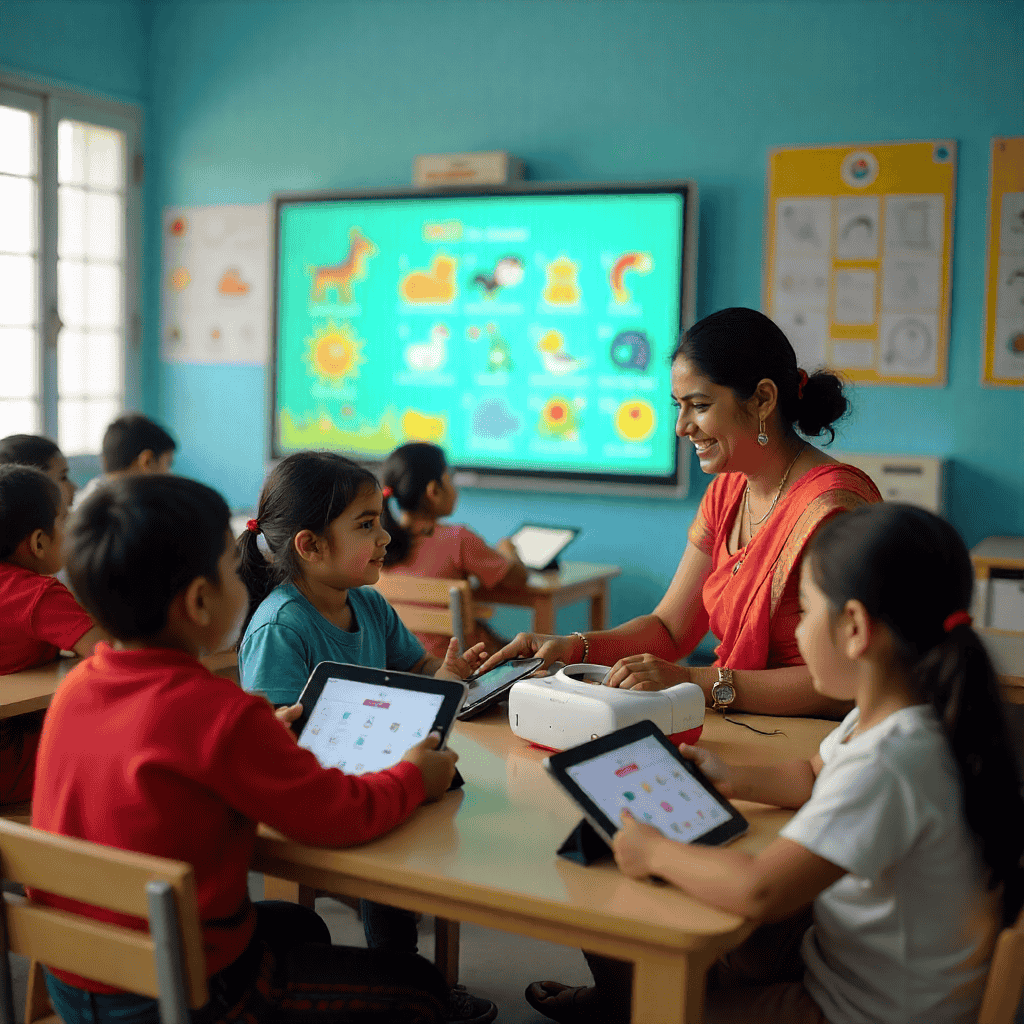
『 ZORO 』
5 months ago
Inside India’s First AI-Powered Anganwadi: Bridging the Digital Divide in Rural Classrooms
“AI-powered anganwadi” captures the pioneering technology at work, highlighting how advanced solutions can reach – and empower – the most underserved corners of the country. The impact of this initiative is already visible, with increased student engagement, improved digital literacy, and positive community feedback.

What is an AI-Powered Anganwadi?
An AI-powered anganwadi integrates artificial intelligence tools into traditional early childhood centers, using smart boards, interactive apps, and adaptive learning systems tailored to each child’s pace. These classrooms go beyond basic instruction, offering real-time assessment, multilingual support, and rich audio-visual content—all adapted to India’s regional diversity.
Why Is This Important?
Bridging the digital divide is essential to ensure that rural children do not fall behind in a tech-driven era. Traditionally, anganwadis serve as the first learning environment for millions, yet they often lack access to technology and innovative teaching methods. The AI-powered anganwadi not only provides exposure to modern learning tools but also levels the educational playing field. This effort aligns with India’s vision for digital inclusivity under government initiatives like Digital India and Samagra Shiksha.
How Does It Work?
Children interact with AI-driven educational apps that use speech and gesture recognition, adaptive quizzes, and storytelling to promote language, mathematics, and critical thinking skills. Teachers receive training to integrate digital content and monitor each child’s progress using analytical dashboards.
Tech partners contribute by supplying robust, low-cost hardware suitable for rural settings, while the AI backend continually adapts lesson plans and difficulty levels. Community involvement ensures local languages and culture remain central.
Impact on Rural Education
- Student Engagement: Real-time feedback, interactive lessons, and visually rich content increase enthusiasm and attendance.
- Teacher Empowerment: AI tools reduce administrative burdens and help teachers customize instruction.
- Equity: Children in remote villages gain access to the same educational technology as their urban peers.
- Community Benefits: Parents report greater interest in education, seeing visible progress in their children’s language and numeracy.
Expert Views
According to Dr. Anjali Sharma, an education technology specialist, “The AI-powered anganwadi model is a breakthrough in early education. It combines India’s grassroots educational network with cutting-edge digital learning, transforming outcomes at an unprecedented scale.”
Educational NGOs and state departments echo this sentiment, emphasizing the scalable potential across thousands of rural centers.
Challenges and the Road Ahead
While promising, the journey is not without challenges—teacher training, infrastructure reliability, and ensuring robust monitoring remain areas needing attention. Partnerships with local government, NGOs, and tech companies are helping address these hurdles.
Conclusion
India’s first AI-powered anganwadi is more than just a classroom upgrade—it’s a leap toward educational equity. By blending technology with local teaching traditions, these centers are bridging the digital divide for the country’s youngest learners, offering hope for a future where no child is left behind in the digital age.
Source-



